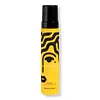What's inside
What's inside
 Key Ingredients
Key Ingredients

No key ingredients
 Benefits
Benefits

 Concerns
Concerns

 Ingredients Side-by-side
Ingredients Side-by-side

Water
Skin ConditioningPolyquaternium-55
Cocamidopropyl Hydroxysultaine
CleansingAloe Barbadensis Leaf
MaskingPvp
Emulsion StabilisingTocopheryl Acetate
AntioxidantCitric Acid
BufferingSilk Amino Acids
HumectantPolysorbate 20
EmulsifyingEthylhexylglycerin
Skin ConditioningOleth-20
CleansingParfum
MaskingGlycereth-2 Cocoate
EmulsifyingIsostearamidopropyl Morpholine Lactate
Phenoxyethanol
PreservativeBenzoic Acid
MaskingDisodium EDTA
Water
Skin ConditioningPolyquaternium-11
Pvp
Emulsion StabilisingCocamidopropyl Betaine
CleansingAlthaea Officinalis Root Extract
Skin ConditioningGlycerin
HumectantRicinus Communis Seed Oil
MaskingArgania Spinosa Kernel Oil
EmollientCaprylic/Capric Triglyceride
MaskingBiotin
AntiseborrhoeicPolyglyceryl-4 Caprate
EmulsifyingPolyglyceryl-6 Caprylate
EmulsifyingSodium Chloride
MaskingC12-18 Acid Triglyceride
EmollientCocamidopropyl Dimethylamine
EmulsifyingSodium Glycolate
BufferingSodium Benzoate
MaskingBenzyl Alcohol
PerfumingEthylhexylglycerin
Skin ConditioningParfum
MaskingBenzyl Benzoate
AntimicrobialHexyl Cinnamal
PerfumingAmyl Cinnamal
PerfumingHydroxycitronellal
PerfumingLinalool
PerfumingCitronellol
PerfumingLimonene
PerfumingCoumarin
PerfumingGeraniol
PerfumingWater, Polyquaternium-11, Pvp, Cocamidopropyl Betaine, Althaea Officinalis Root Extract, Glycerin, Ricinus Communis Seed Oil, Argania Spinosa Kernel Oil, Caprylic/Capric Triglyceride, Biotin, Polyglyceryl-4 Caprate, Polyglyceryl-6 Caprylate, Sodium Chloride, C12-18 Acid Triglyceride, Cocamidopropyl Dimethylamine, Sodium Glycolate, Sodium Benzoate, Benzyl Alcohol, Ethylhexylglycerin, Parfum, Benzyl Benzoate, Hexyl Cinnamal, Amyl Cinnamal, Hydroxycitronellal, Linalool, Citronellol, Limonene, Coumarin, Geraniol
 Reviews
Reviews

Ingredients Explained
These ingredients are found in both products.
Ingredients higher up in an ingredient list are typically present in a larger amount.
Ethylhexylglycerin (we can't pronounce this either) is commonly used as a preservative and skin softener. It is derived from glyceryl.
You might see Ethylhexylglycerin often paired with other preservatives such as phenoxyethanol. Ethylhexylglycerin has been found to increase the effectiveness of these other preservatives.
Parfum is a catch-all term for an ingredient or more that is used to give a scent to products.
Also called "fragrance", this ingredient can be a blend of hundreds of chemicals or plant oils. This means every product with "fragrance" or "parfum" in the ingredients list is a different mixture.
For instance, Habanolide is a proprietary trade name for a specific aroma chemical. When used as a fragrance ingredient in cosmetics, most aroma chemicals fall under the broad labeling category of “FRAGRANCE” or “PARFUM” according to EU and US regulations.
The term 'parfum' or 'fragrance' is not regulated in many countries. In many cases, it is up to the brand to define this term.
For instance, many brands choose to label themselves as "fragrance-free" because they are not using synthetic fragrances. However, their products may still contain ingredients such as essential oils that are considered a fragrance by INCI standards.
One example is Calendula flower extract. Calendula is an essential oil that still imparts a scent or 'fragrance'.
Depending on the blend, the ingredients in the mixture can cause allergies and sensitivities on the skin. Some ingredients that are known EU allergens include linalool and citronellol.
Parfum can also be used to mask or cover an unpleasant scent.
The bottom line is: not all fragrances/parfum/ingredients are created equally. If you are worried about fragrances, we recommend taking a closer look at an ingredient. And of course, we always recommend speaking with a professional.
Learn more about ParfumPvp is a water-soluble synthetic polymer and common hairstyling ingredient. It is a film-forming ingredient and used to "hold" specific shapes of hair.
Pvp is less effective in high-humidity. It tends to draw moisture, but this moisture dismantles the structure and "hold".
Water. It's the most common cosmetic ingredient of all. You'll usually see it at the top of ingredient lists, meaning that it makes up the largest part of the product.
So why is it so popular? Water most often acts as a solvent - this means that it helps dissolve other ingredients into the formulation.
You'll also recognize water as that liquid we all need to stay alive. If you see this, drink a glass of water. Stay hydrated!
Learn more about Water